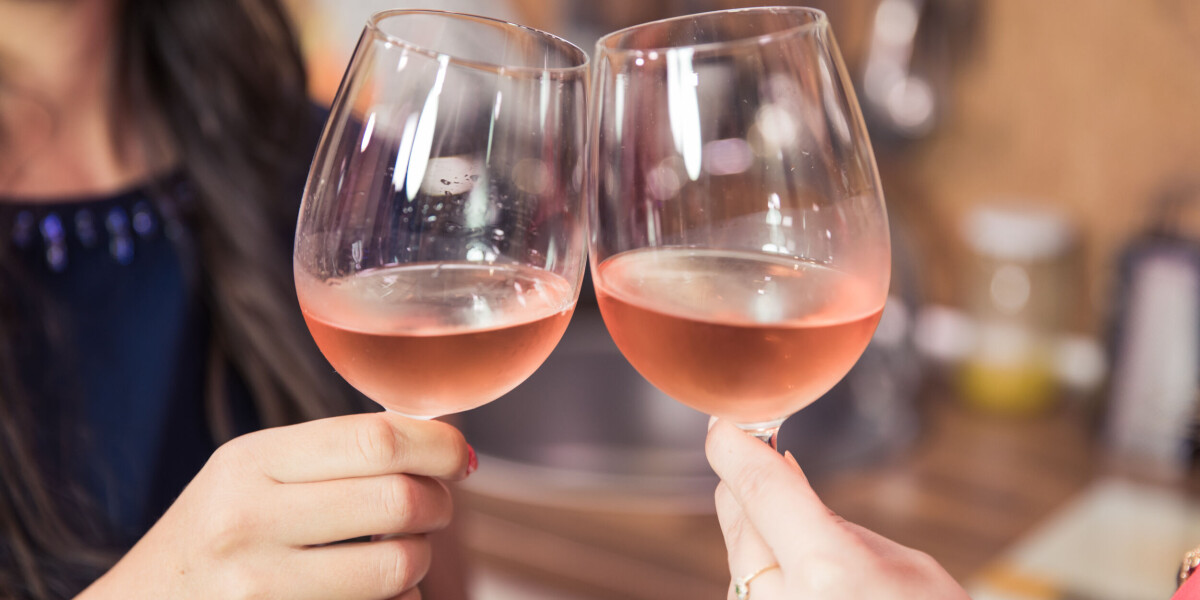
🍷 rosé revolution! France leads the world in pink wine consumption 🌍🥂
- Select a language for the TTS:
- UK English Female
- UK English Male
- US English Female
- US English Male
- Australian Female
- Australian Male
- Language selected: (auto detect) - EN
Play all audios:

DO YOU RECEIVE THE CONNEXION'S FREE WEEKDAY NEWSLETTER? Sign up here Rosé wine has risen from a cheap summer tipple to a place of prestige in recent years. We look at how rosé charmed
wine lovers and saw its sales boom. French wine is in the pink – people here drink more rosé than any other country, consuming 35% of the world’s production. According to figures from the
Conseil Interprofessionnel des Vins de Provence, Americans are the next biggest consumers at 15%, with Germans at 10% in third place. The boom in rosé is largely the result of 30 years of
hard work in Provence, where the quality of the wine, vineyards and the price of land suitable for growing these grapes has transformed. Rosé wine was seen in the 1980s and 1990s as a cheap,
acidic, headache-inducing drink, best consumed very cold to help it go down. Now, however, it is often much fruitier and even cheap bottles are invariably superior to their similarly-priced
white equivalent. At the top end, prices do not rival the most expensive red wines, but bottles can sell for €200 each. Read more: Rosé wine guide - a tour through France’s pink wine
producing regions Earlier this year, vineyards producing top quality rosé in Var were sold for around €374,000 a hectare to the wine division of luxury goods firm LVMH – provoking anger from
unions who fear that family vineyards will be squeezed out of the market by deep-pocketed corporate owners. In the 1990s, by comparison, vineyards in the department could be bought for the
equivalent of €20,000 a hectare. 'THE COLOUR AFFECTS OUR TASTE PERCEPTION' The attraction of rosé wine is partly due to its pretty colour. Indeed, our perception of all wines is
largely influenced by their shade, explained Mathieu Huguet, who takes tasting classes at Ecole du Vin de Bordeaux: “Our brains are totally influenced by colour when we taste wines. “Just
look at the language we use – with red wines being described with berry flavours and white wines with white fruit flavours, such as apricots or lychees. “When trained tasters cannot see the
colour of a wine, they can sometimes even get the colour wrong.” Scientific analysis of wine, Mr Huguet said, showed that some reds and whites have similar taste profiles, but are described
very differently by subjective human tasters. He added that the trend in rosé wines from Provence and increasingly Bordeaux was for the pink to become paler, and for some Bordeaux reds to
also return to the lighter coloured clarets of the past. BLACK GRAPES FOR PINK WINE Rosé is pink because it is made with black grapes which are either pressed directly, leaving a juice
lightly coloured by the skins, or crushed first and left for a short time, often just a few hours, before being pressed. By contrast, red wines, which are also made from black grapes, are
usually crushed and left to ferment with the skins, pips and sometimes stems, for weeks, before the liquid, by now a dark red is drawn off. Red wines vary greatly in colour, from the famous
light reds of traditional clairette (claret) from Bordeaux, exported in vast quantities to Britain, to the deeper colours of other wines. They change colour with time too – very young reds
often have a purple tinge while older ones sometimes have a tawny brown edge to them. France also has a famous vin noir from Cahors in the Lot. Made from Malbec grapes, with very long
maceration periods, the wine is traditionally such a dark red it appears black. In the old days, the tannins in the wine, from the skins and stems, were so strong that it was usual for the
wines to be drinkable only after seven years, when they had softened. Read more: The wine industry is in constant evolution in France and beyond IS THE FUTURE ORANGE? Orange wines are also
increasingly fashionable, after being virtually unheard of in France for years. They are made with white grapes, but with red wine methods – the grapes are crushed, left to macerate, and
then the liquid withdrawn and remaining skins pressed. Yellow wines also stand out from the crowd. These are white wines, notably from the Jura region, which are matured with a type of yeast
that floats to the top of the wine – a bit like a top fermenting ale. In French the technique is called vieillissement sur voile. In Spain most sherries are made in a similar way.
